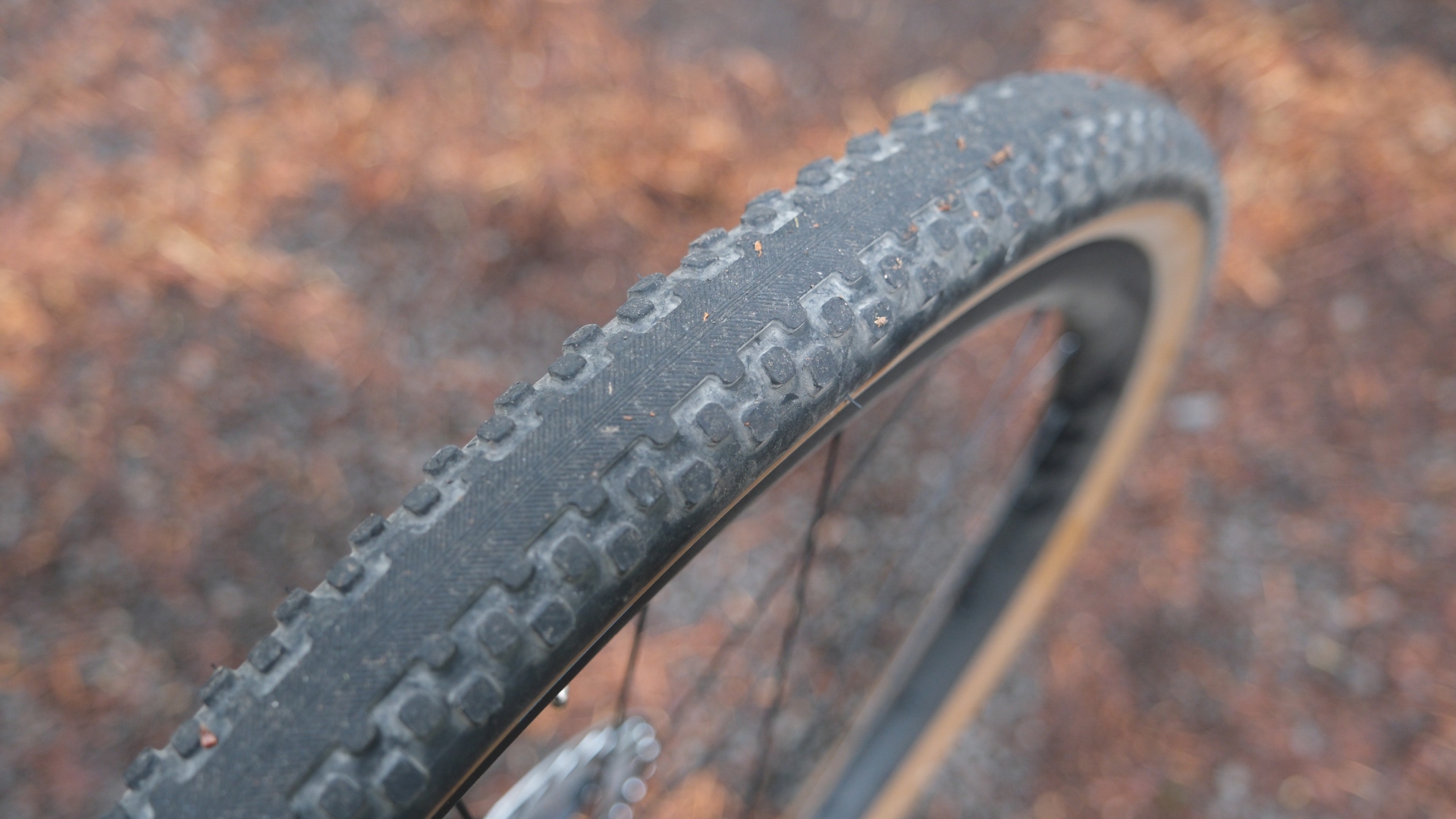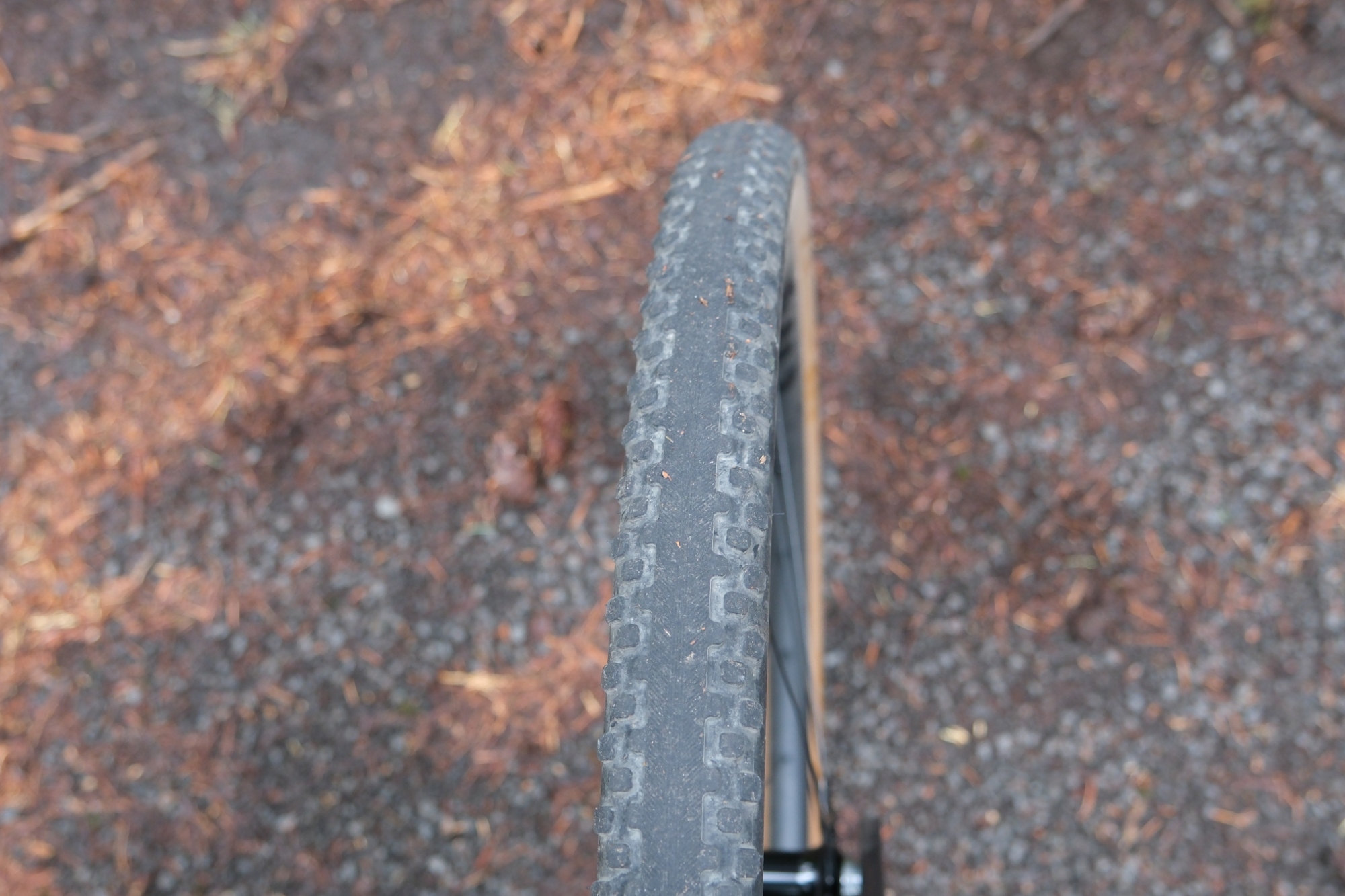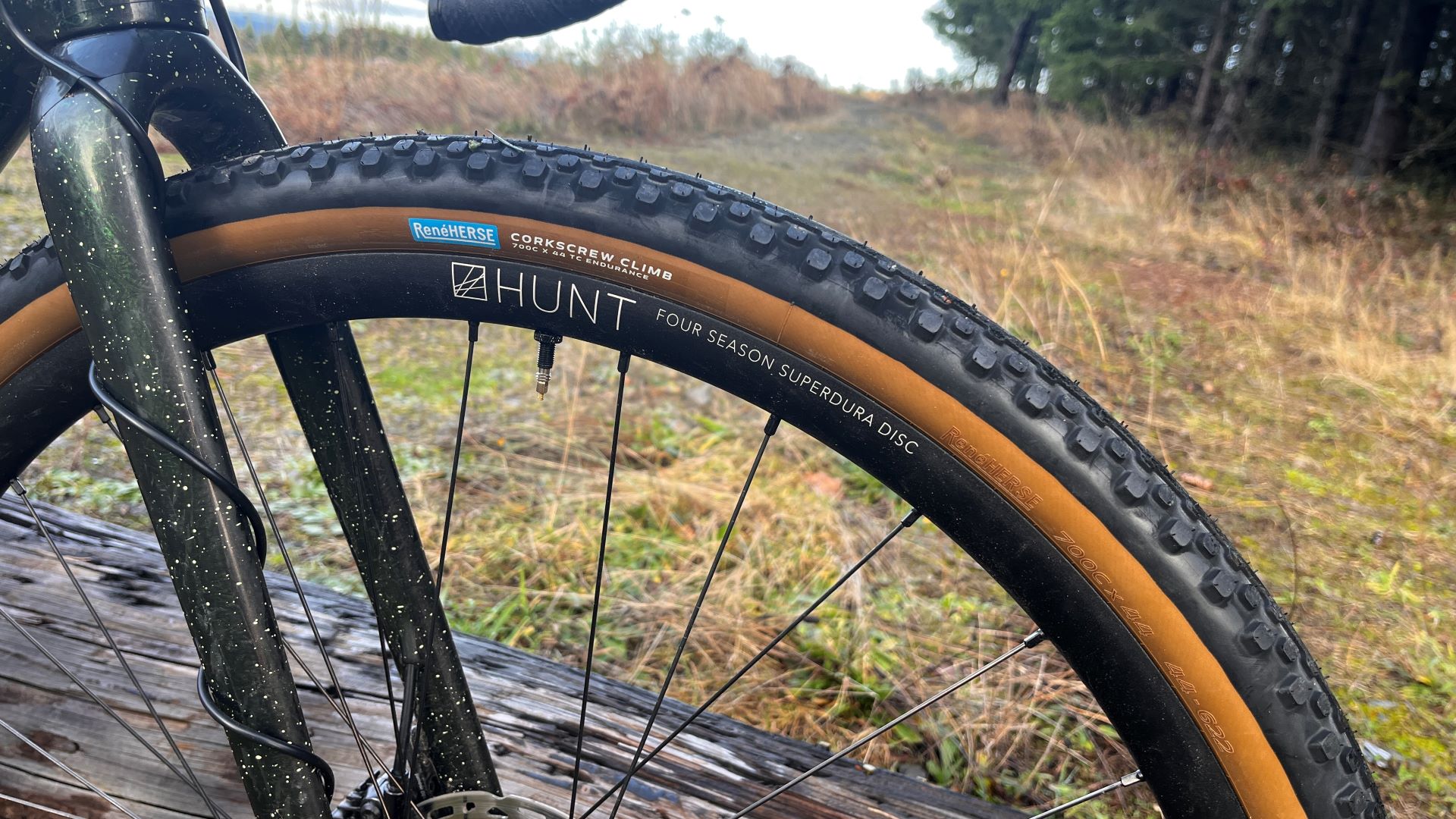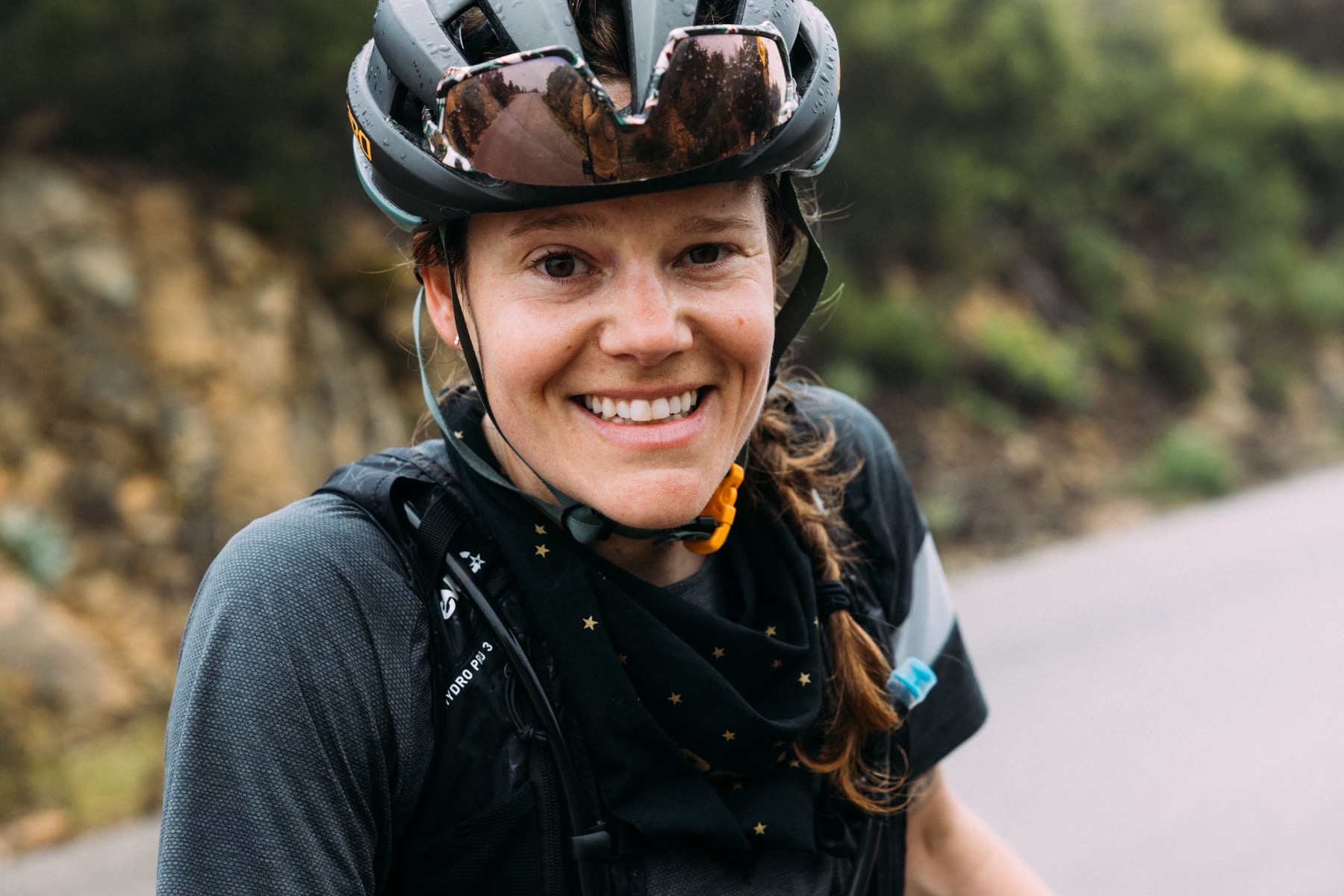René Herse Corkscrew Climb tyre review: A bold, knob-heavy take on the semi-slick gravel tyre
The Corkscrew Climb blends control, comfort and real-world speed for all-conditions riding

The René Herse Corkscrew Climb is an unusual but thoughtfully executed semi-slick that strikes a good balance between speed, grip and versatility. With confident traction in wet and technical terrain, a smooth tubeless setup, and the brand’s signature supple ride feel, it’s a compelling option for riders tackling varied conditions, particularly those who value control and comfort over marginal gains in speed.
-
+
Easy set up
-
+
Nice ride feel
-
+
Good grip
-
+
Great for wet weather riding
-
-
Not as fast as semi-slick competitors
You can trust Cycling Weekly.

After three years of research and development, René Herse, known for its high-performance bicycle tyres and components, launched its first semi-slick tyre model back in January.
Semi-slick designs are commonplace in gravel cycling, and René Herse readily acknowledges its late arrival to the category, stating: “we have a lot of respect for pioneers who came before us. We also have a healthy degree of scepticism when faced with groupthink and innovations that don’t make sense. That’s why, until now, there hasn’t been a semi-slick gravel tyre in the René Herse program. Simply put, the established way to make semi-slicks resulted in tyres that were neither particularly fast, nor did they grip particularly well.”
With its all-new Corkscrew Climb model, René Herse promised to deliver “not just another semi-slick” but rather a tyre that’s meant to be the best of both worlds: fast like slicks, grippy like knobbies.
Brand owner Jan Heine tells Cycling Weekly that the Corkscrew Climb was developed in response to the demands and insights of its sponsored gravel racers.
“We’re lucky to get direct feedback from our racers…They love the speed and durability of our casings—that’s why they chose our tyres. They like riding slicks on most courses, figuring that the least tread also has the least resistance. But if it’s muddy, they need knobs. For that, they’ve been using our dual-purpose knobbies.”
While the knobbed René Herse tyres are praised for their speed, Heine revealed that in internal testing, they discovered that under high power outputs, the knobs can flex and squirm slightly, leading to power loss. While this isn't much of a concern for most riders, it does become an issue for athletes like Ted King or Brennan Wertz, who are taller, heavier and frequently produce outputs of more than 500 watts during races.
And so, the design team went to work. Three years later, the result is a 700 x 44mm semi-slick tyre with a slick centre for efficiency, three rows of large knobs for traction.
Rene Herse tyres have generally reviewed well, so we were keen to put this new addition to the test.
The latest race content, interviews, features, reviews and expert buying guides, direct to your inbox!
Meet the Corkscrew Climb

Rene Herse’s first-ever semi-slick tyre is named after the biggest climb of the old SBT GRVL race course: the Corkscrew Climb. The 2025 edition of the race was moved to a new 37‑mile closed loop circuit in Hayden, CO, and did not feature the climb. Rene Herse’s sponsored athlete and national gravel champion Brennan Wertz did win the 2025 race, but he did so on the Barlow Pass slicks, instead of these semi-slicks – opting for a narrower tyre and pure speed.
The Corkscrew climb is a 44mm tyre with the same large square knobs as seen on the Oracle Ridge, and pairs them with a slick centre. It’s certainly beefier than most semi-slick gravel tyres on the market but among the rise of mountain bike tyres used in gravel races, these seem almost tame.
When looking at the Corkscrew Climb tyre, there are a few main patent-pending design features that stand out:
- there’s a slick centre with a minimal chevron tread that, Heine says, is meant to improve braking performance;
- a gradual transition from slick to knobs thanks to a row of half nobs anchored to the slick centre;
- two rows of large, rectangle knobs that are staggered for noise-cancelling benefits. Heine says the large knobs flex less and are faster than smaller knobs;
- the centre and knobs are all the same height.
- a rounded profile.
Specs:
As with most René Herse models, the tyre will be available in four casing options and two different sidewall colours.
- Size: 700 x 44
- Casings, weights, prices:
- Standard: 517g, $82
- Extralight: 481g, $96
- Endurance: 552g, $96
- Endurance Plus: 564g, $104
The Ride

Like so many high-end, niche brands, René Herse is a brand that elicits strong opinions. Its loyal fanbase swears by the performance of its products, while critics are quick to voice their concerns.
I’ve had the opportunity to test ride a variety of René Herse tyres models over the years, and I’m generally a fan. The supple casings provide a remarkable ride feel but also reliable traction and superior comfort over rough terrain. I’ve found that both the traction and speediness often belie the tyre width or tread pattern. By that, I mean that the slicks have more grip than one would expect and the knobs and width don’t feel sluggish when you hit the pavement.
That said, they’re not without their challenges. Personally, I tend to avoid the Extralight casing as it can be more prone to punctures and sidewall weepage. And as a reviewer, I am constantly swapping tyres, and some René Herse models can be tricky to remount and seat once they’ve been used. They’re also quite spendy.
Still, the advantages often outweigh the disadvantages. And when I saw the brand venture into the semi-slick category earlier this year, I was eager to test the new tyres myself.
I’ve been riding these tyres on and off since the beginning of the year, giving me the chance to try them in everything from snow and thick mud to dry, dusty summer conditions.
Visually, the Corkscrew Climb immediately sets itself apart in the semi-slick category, which is typically defined by closely spaced, low-profile tread patterns. In contrast, this tyre combines a 17mm-wide slick centre with generously spaced, square knobs lifted directly from René Herse’s Hurricane Ridge and Oracle Ridge models. The result is a semi-slick that looks far more rugged and trail-ready than most of its peers. But as mountain bike tyres are becoming increasingly common in gravel racing, this bold tread suddenly fits right in.
For my test set, I opted for the Endurance casing. The tyres came in slightly underweight and measured true to size. They came in at 44.65mm on my Shimano WH-RX880 wheels, which have a 25mm internal rim width.
The tubeless setup was a breeze, and the tyres have held air very well, meaning you don’t have to pump them up every time you’re headed out the door.

Over the past seven months, these tyres have seen everything from cracked pavement and hardpack gravel to downright sloppy trails and even some rocky terrain. The grip is certainly there, even in the muck, and I’ve yet to get a puncture – thank you, Endurance casing.
The Corkscrew also feels faster than its all-knob siblings, but that is an entirely subjective impression, since we haven’t conducted any lab testing. But BicycleRollingResistance.com has, and their results ranks the Corkscrews just below the Hurricane Ridge in rolling resistance, but the margin is surprisingly slim.
Of course, lab results on steel drums don’t perfectly translate to real-world performance, and on the road and groads, the Corkscrew Climb is no slouch.
I should also note that I will never produce the kind of power output of riders like Ted King or Brennan Wertz. Therefore, I can’t claim to have actually, tangibly, experienced the power-diminishing flex of knobs that these semi-slicks aim to address.
What matters more to me is ride feel, traction and grip. Even if the Corkscrew Climb isn’t significantly faster than its fully knobbed siblings, the slick centre provides a broader contact patch on paved and hard-packed surfaces. That translates into more grip through the centre, while the large outer knobs are called into action during cornering, keeping you planted when things get loose.
With that said, in dry summer conditions on fast, non-technical courses, like we saw at this year’s SBT GRVL, I’d admittedly be more inclined to choose a faster, less-knobby tyre like the Schwalbe G-One RS, the Cadex AR or perhaps even one of René Herse’s slick options such as the 44mm Snoqualmie Pass.
But for bikepacking or routes with mixed terrain and trail sections, the Corkscrew Climb is a very solid option. And here in the Pacific Northwest, with its long rainy season, it also makes for an excellent wet-weather all-rounder.
The Corkscrew Climb does leave me with a question: does this semi-slick design offer a tangible advantage over the brand’s “dual-purpose knobs,” which are also marketed as equally capable on pavement and dirt? For example, when would one choose the fully knobbed 44mm Manastash Ridge TC over the semi-slick Corkscrew Climb?
From a ride feel perspective, there’s little to separate them. On mixed-surface rides, I’ve never felt significantly slowed by the Manastash’s full-knob tread pattern. And on wet, hardpack terrain, the Corkscrew Climb may even offer better grip due to its centre contact patch. So does the Corkscrew Climb replace the Manastash?
Both are versatile and capable, and your decision may just come down to how much pavement you expect to ride or, if you're someone like King or Wertz, how much power you’re putting through the pedals.
When it comes to traction and ride feel, particularly in wet and technical conditions, the Corkscrew Climb is a durable, dependable, and a strong all-rounder. But if outright speed is your top priority for front-of-the-pack racing, there are faster semi-slicks available.
Verdict

The René Herse Corkscrew Climb is an unusual but thoughtfully executed semi-slick that strikes a good balance between speed, grip and versatility. With confident traction in wet and technical terrain, a smooth tubeless setup, and the brand’s signature supple ride feel, it’s a compelling option for riders tackling varied conditions, particularly those who value control and comfort over marginal gains in speed.

Cycling Weekly's North American Editor, Anne-Marije Rook is old school. She holds a degree in journalism and started out as a newspaper reporter — in print! She can even be seen bringing a pen and notepad to the press conference.
Originally from the Netherlands, she grew up a bike commuter and didn't find bike racing until her early twenties when living in Seattle, Washington. Strengthened by the many miles spent darting around Seattle's hilly streets on a steel single speed, Rook's progression in the sport was a quick one. As she competed at the elite level, her journalism career followed, and soon, she became a full-time cycling journalist. She's now been a journalist for two decades, including 12 years in cycling.
You must confirm your public display name before commenting
Please logout and then login again, you will then be prompted to enter your display name.